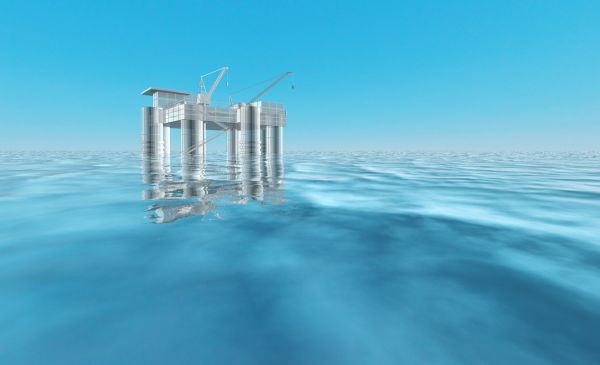
More than two-thirds of the earthâs surface is covered with ocean. It is a largest collector of solar energy. It is estimated that the total amount of solar energy absorbed by the water of the tropical oceans is equivalent to the heat produced by 250 barrels of oil. The daily energy needs of our planet could be satisfied by harnessing a small fraction of the energy stored in the ocean water.
Ocean Thermal Energy Conversion (OTEC) system converts the solar energy stored in the ocean water into electricity. The significant difference in temperature between the warm surface water and cooler water at lower depths of the sea facilitates generation of power needed to propel heat engines for producing electricity. To enable power generation, the surface temperature should be at least 20-degree Celsius higher than the temperature of the cold deep water. The tropical oceans offer the greatest potential for ocean thermal energy conversion.
The good
Non-conventional source of energy
Unlike the other natural renewable sources of energy such as solar energy, which can be harnessed only on bright sunny days or wind power that can run turbines only on windy days, OTEC is a constant source of energy, having availability of 24 hours. Large-scale use of this environment friendly energy source could help in reducing pollution.
Resource for on-shore and near-shore mariculture operations
Besides generating electricity, the OTEC plants aid desalination of ocean water, providing fresh water for domestic, industrial and agricultural use. 4300-cubic meter of fresh water is discharged daily by an OTEC plant with a capacity to generate 2-megawatt of electricity.
The temperature of the cold deep-sea water does not change significantly while passing through the OTEC plant. The cold water could be reused as the key component in industrial and domestic cooling systems.
The fresh water discharged by the OTEC plants could be used for aquaculture. The cooler water could aid cultivation of temperate crops in warmer tropics.
The ocean water is a massive source of minerals. OTEC might also be used for extracting the minerals dissolved in the ocean water.
OTEC is also a source of fuels such as methanol, ammonia and hydrogen.
Can this be better?
Despite the immense power generation potential, the current OTEC plants are capable of producing only a modest amount of electricity. Technological innovations are needed to enhance the operations of the plants.
In an OTEC plant, the warm ocean water is transported to the heat exchanger where it vaporizes the working fluid. At low to moderate pressure, the vapor expands and turns the turbo-generator, generating electricity. The vapor then flows through the condenser, where it is cooled by the cold seawater. Further research is needed for increasing the efficiency of the heat exchanger of the OTEC plants. An efficient heat exchanger could significantly enhance electric power generation. Researchers need to focus on the design of the plants and the materials used for constructing the OTEC plants.
Developing cost-effective methods for extracting minerals and fuels from the ocean water could make OTEC plants a lucrative source of income, encouraging entrepreneurs and governments to harness this economic renewable source of energy.
The bad
Transportation
The OTEC plants need large pipes, nearly 3km long, for transporting the cold water from 1000m below the surface of the ocean to the plants on the shore. The cost of constructing the large pipes accounts for about 75% of the design cost.
Discharging of the cold and warm seawater
The warm and cold water discharged from the OTEC plants could affect the temperature of the coastal fringes. To avoid any adverse impact, the used seawater needs to be discharged at comparable temperature gradients. This further escalates the construction and maintenance costs of the plants.
Can this be avoided?
The high costs involved in transportation of cold seawater and construction of discharge pipes could be resolved by building floating OTEC facilities. However, a floating plant requires high mooring and maintenance cost.
The ugly
Cost
The high construction and maintenance cost are the major deterrents in using OTEC as a renewable power source. The cost of producing electricity by an OTEC unit is approximately $0.07 per KW-hour. Developing countries lack the resource for constructing OTEC plants.
Political concerns
The floating OTEC plants are essentially artificial islands. Location of these facilities on the sea might lead to political debates regarding the jurisdiction of the region. The boundary disputed that might erupt would inhibit utilization of the solar energy trapped in the seawater.
Why are we so critical?
The major criticism against the OTEC plant is the exorbitant cost of constructing the infrastructure for the facilities. The huge investment needed for building the OTEC plants would create a dearth of resources that might be otherwise used for financing the social sector.
The bottomline
Despite the criticisms, with advancement in technology, OTEC would emerge as a suitable cost-effective alternative to conventional energy in the future.




